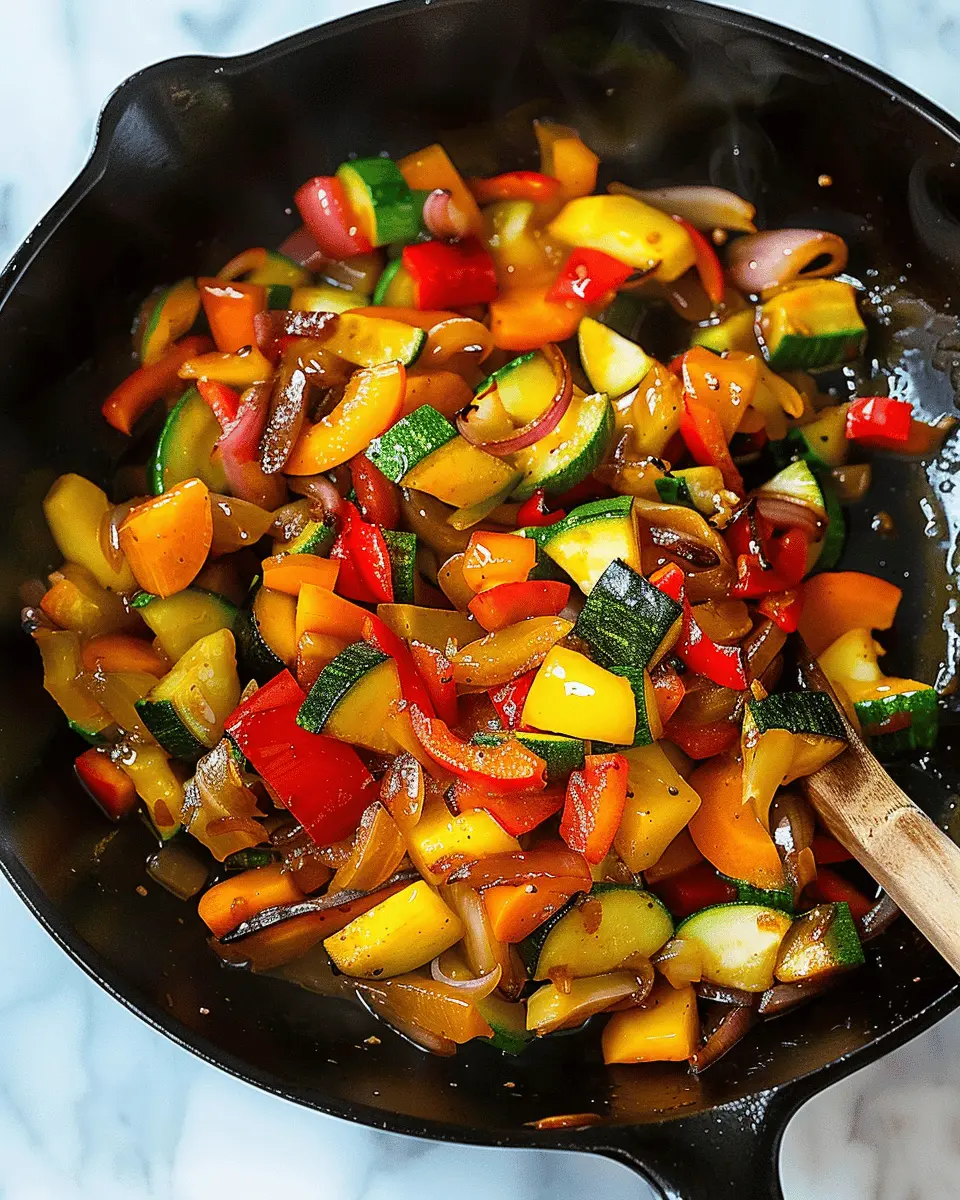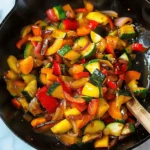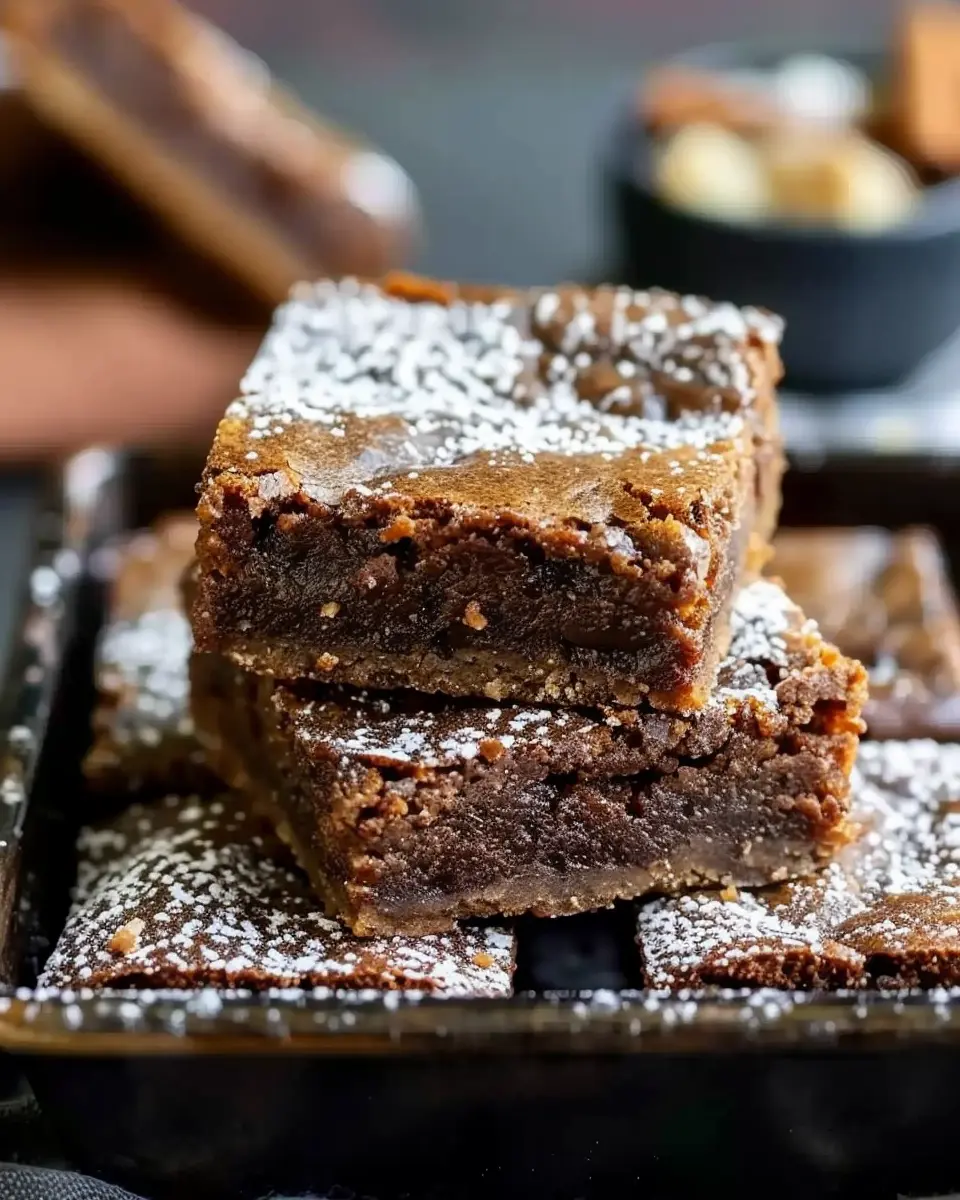Introduction to Sautéed Vegetables
Are you juggling a demanding job, social life, and maybe even a hobby or two? Finding time to make nourishing meals can feel like yet another item on your already packed to-do list. Fortunately, sautéed vegetables are here to simplify your culinary routine! This quick and versatile cooking technique allows you to enjoy fresh, vibrant veggies even on your busiest days.
The Appeal of Sautéed Vegetables for Young Professionals
For those of us racing against the clock, sautéed vegetables represent a delicious and nutritious solution. In just 15 minutes or less, you can transform a medley of crunchy peppers, sweet onions, and leafy greens into a flavorful side dish or light main course. Consider these benefits:
- Speed: Sautéing is one of the quickest cooking methods. With prep and cooking times combined, you can have your meal ready in no time. Perfect for post-work dinners!
- Versatility: From hearty broccoli to tender zucchini, almost any vegetable can be sautéed. This means you can adapt the recipe to whatever you have on hand, reducing food waste and saving money.
- Nutritional Value: Retaining a lot of their natural colors and flavors, sautéed vegetables often show off their nutrients better than boiled or steamed options. Nutritional experts, like the USDA, highlight that cooking methods like sautéing can boost the bioavailability of certain vitamins and minerals.
Plus, remember that you can toss in extras like garlic, herbs, or even a splash of lemon juice to elevate your sautéed veggie game. Need more inspiration? Check out these nutrition insights from the USDA.
Getting Started
The beauty of sautéing lies in its simplicity. All you need is a trusty skillet, a bit of oil, and your favorite vegetables. Here’s a thought: why not experiment with seasonal produce to discover new flavors and textures? Not only does this make your dishes more exciting, but you also support local farmers and sustainability initiatives.
So, the next time you find yourself pressed for time, remember that sautéed vegetables can make healthy eating both quick and satisfying. This effortless cooking method might just become your new go-to for weekday meals!
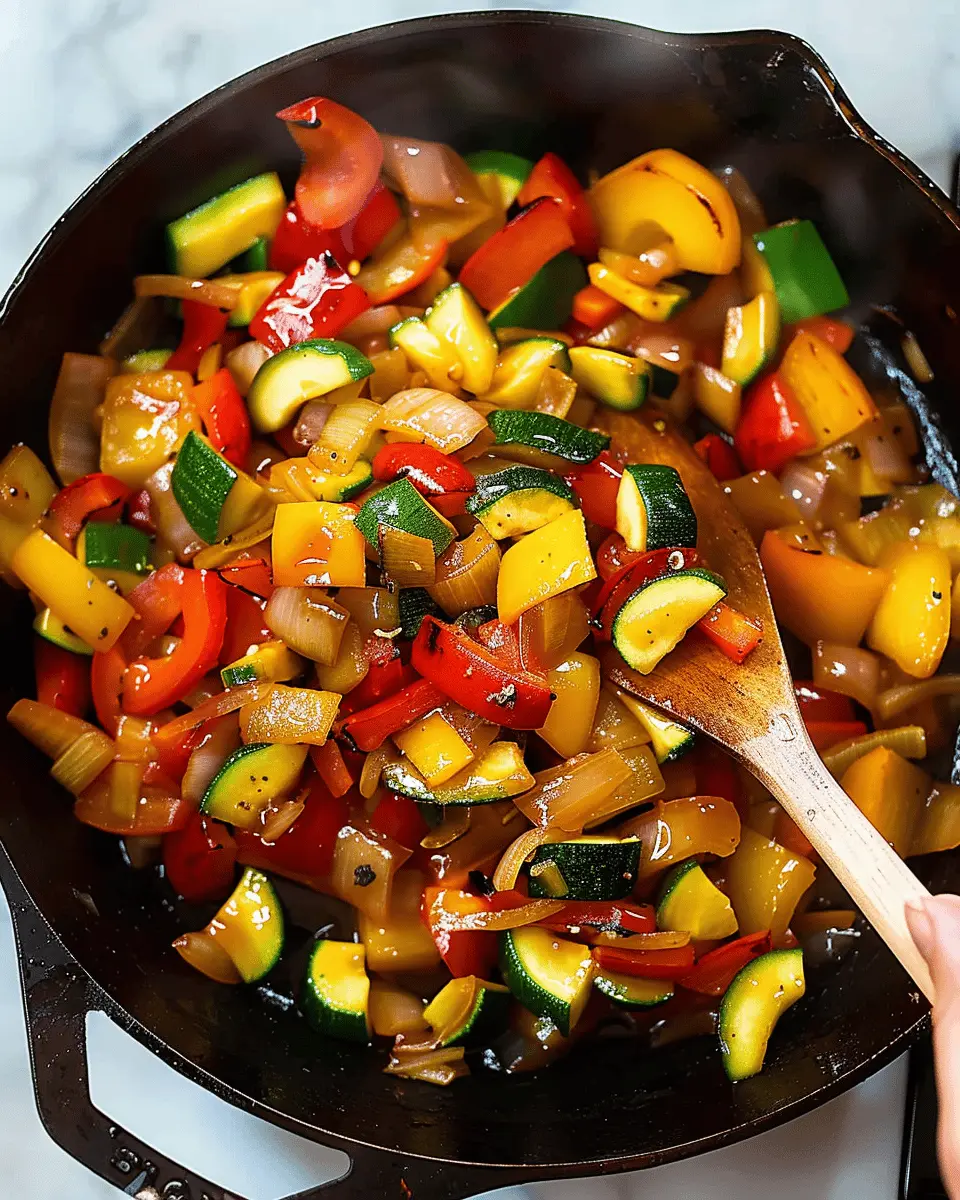
Ingredients for Sautéed Vegetables
Essential vegetables for delicious sautéing
When it comes to creating sautéed vegetables, the choices are endless! Here are some must-have veggies that bring freshness and flavor to your dish:
- Bell Peppers: Their sweetness adds a wonderful contrast.
- Zucchini: This provides a tender bite and cooks quickly.
- Broccoli: Packed with nutrients, it keeps a nice crunch.
- Carrots: They offer both color and a subtle sweetness.
- Onions: Sautéed onions bring a rich, aromatic depth.
Feel free to mix and match based on what you have available! Fresh, seasonal vegetables not only elevate the dish but are also a great way to incorporate more nutrients into your diet. You might explore this guide on wholesome vegetables for inspiration!
Optional additions for flavor enhancement
To make your sautéed vegetables even more exciting, consider adding:
- Garlic: A few cloves will infuse your dish with warmth.
- Turkey Bacon or Chicken Ham: For a savory twist, these options add depth without overwhelming veggies.
- Herbs and Spices: A sprinkle of basil or a dash of cumin can elevate the overall taste.
Think about what flavors you love, and don’t hesitate to experiment! Different combinations can lead to deliciously unique results every time you cook. What will you try first?
Preparing Sautéed Vegetables
Sautéed vegetables are not just a delightful addition to any dish; they can also steal the spotlight as a stand-alone meal! Packed with flavor and nutrients, these colorful veggies can brighten up your dinner plate. In this guide, we will walk you through the steps to create perfect sautéed vegetables. Let’s get started!
Gather and prep your vegetables
The first step to preparing delicious sautéed vegetables is selecting the right ones. Whether you prefer classic options or adventurous varieties, here’s a list to consider:
- Bell peppers
- Zucchini
- Carrots
- Broccoli
- Spinach
- Mushrooms
When you’re at the grocery store or farmer’s market, look for fresh, vibrant vegetables—they’re not just prettier, but also taste better! Once you’re home, wash all vegetables thoroughly and slice them into bite-sized pieces. If you’re unsure about the size, remember that smaller pieces cook quicker and evenly, resulting in those perfectly tender bites.
For more tips on selecting fresh produce, check out this helpful guide on choosing seasonal vegetables from The Spruce Eats.
Choose your sautéing oil wisely
Choosing the right oil is crucial for achieving that sought-after flavor enhancement and perfect texture. Here are some popular choices:
- Olive oil: A classic choice known for its health benefits and rich flavor. Light olive oil works well for high-heat cooking.
- Avocado oil: With a high smoke point and buttery taste, this oil is fantastic for sautéing.
- Sesame oil: Adds a nutty flavor and is particularly great for Asian-inspired veggie dishes.
If you’re looking for a plant-based option or want to avoid unnecessary fats, consider using vegetable broth as a lower-calorie alternative. Just remember, while it won’t deliver the crispiness of oil, it can impart a lovely flavor to your vegetables.
Heat your pan – the golden rule
Now, what’s a party without the right vibe? Your pan needs to be prepped before you add those gorgeous vegetables! Heat it over medium-high heat for about 2–3 minutes before introducing your oil.
A well-heated pan ensures your vegetables cook evenly and achieve that desirable sear. A hot pan also prevents sticking—a palpable frustration during cooking. To test if it’s ready, simply add a drop of water; if it dances and evaporates instantly, you’re good to go!
Add vegetables in the right order
It’s time to sauté! But wait, there’s a strategy here. Different vegetables have varying cooking times, so you’ll want to add them in stages:
- Start with tougher vegetables like carrots and broccoli. Sauté them for about 3-4 minutes.
- Next, add bell peppers and zucchini, cooking for an additional 2-3 minutes.
- Finally, toss in softer vegetables, like spinach or mushrooms, and let them wilt for another 1-2 minutes.
This method ensures that all vegetables are perfectly cooked while retaining their individual flavors and crunch!
Stir and season for optimal taste
As you sauté, don’t forget to stir! This will prevent your vegetables from burning and allow for even cooking. About halfway through, it’s time to sprinkle in your seasoning. A pinch of salt and pepper goes a long way, but you can tailor the flavors to your liking. Consider adding:
- Garlic powder
- Lemon juice
- Fresh herbs like basil or parsley
- Crushed red pepper flakes for heat
Experimenting with your favorite seasonings can turn your sautéed vegetables into an impeccable side dish or a main attraction. Trust me, it’s hard to mess these up!
When you’ve mastered the art of sautéing, the world of culinary delight opens up for you. The next time you’re in the kitchen, consider incorporating these steps for your sautéed vegetables. Happy cooking!
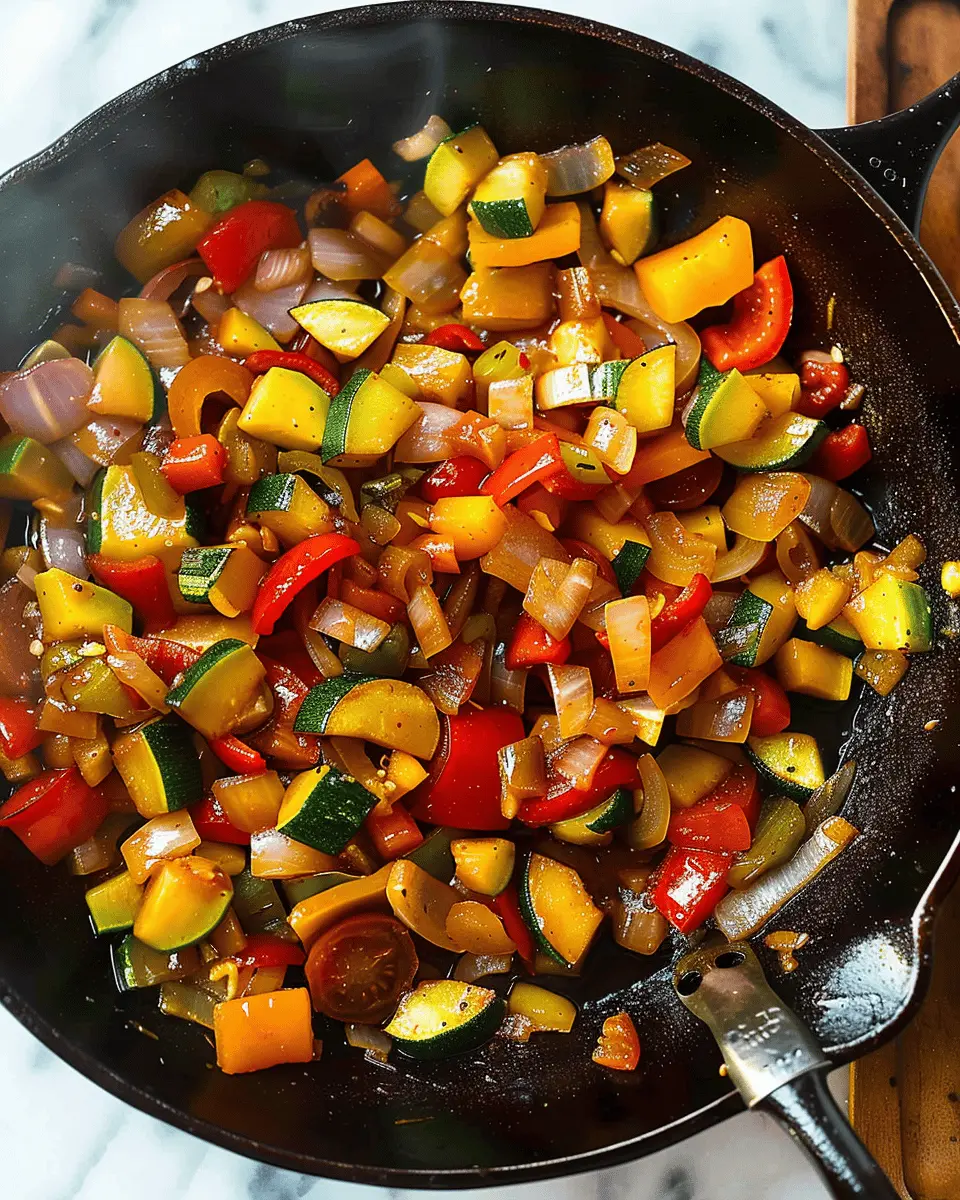
Variations on Sautéed Vegetables
Sautéed Vegetable Medley
One of the simplest and most delightful approaches to sautéed vegetables is the classic vegetable medley. Picture a colorful mix of bell peppers, zucchini, carrots, and snap peas, cooked until just tender. Adding fresh herbs like basil or thyme can elevate the dish, bringing in layers of flavor.
- Tips for optimal taste:
- Use a mix of frozen and fresh vegetables; the frozen varieties can save you time without sacrificing nutrition.
- A splash of vegetable broth or a squeeze of lemon juice at the end can brighten the flavors.
Check out resources like the USDA Nutrition database for detailed vegetable profiles!
Sautéed Asian-Style Vegetables
Feeling adventurous? Transform your usual sautéed vegetables into a vibrant Asian-inspired dish. Use bok choy, mushrooms, and broccoli, and enhance their deliciousness with a dash of soy sauce or a sprinkle of sesame oil. The addition of fresh ginger and garlic can add a zesty kick that will truly wow your taste buds.
- Serving suggestions:
- Top with sesame seeds or chopped green onions for an extra crunch.
- Serve over jasmine rice or quinoa for a complete meal.
You might find inspiration from sites like Serious Eats for more Asian fusion ideas.
Sautéed Vegetables with a Protein Boost
Looking for ways to make your sautéed vegetables more filling? Consider adding a protein boost! Toss in some diced Turkey Bacon or Chicken Ham for an irresistible smoky flavor. If you prefer plant-based options, chickpeas or tofu are fantastic alternatives that offer protein and absorb flavors beautifully.
- Quick recipe idea:
- Sauté your vegetables first, then add the protein source and let everything meld. The flavors will combine into a satisfying meal in no time!
By exploring these variations, you can keep your sautéed vegetables exciting and delicious, making healthy eating a breeze!
Cooking Tips and Notes for Sautéed Vegetables
The Importance of Freshness
When it comes to sautéed vegetables, freshness is key! The brighter and crisper your veggies, the better the flavor. Choose seasonal produce, as they’re usually more flavorful and nutrient-rich. For instance, in summer, zucchini and bell peppers shine in stir-fries, while in the fall, root vegetables like carrots and sweet potatoes steal the show.
But how do you ensure you’re picking the freshest veggies? Look for vibrant colors and firm textures—no wilted leaves or soft spots. You might find helpful resources on picking fresh produce at Food Network.
How to Avoid Soggy Veggies
Soggy vegetables can ruin your dish, so let’s keep them crisp! Here are a few pro tips:
- Pat Dry: Thoroughly pat your vegetables dry before cooking to remove excess moisture.
- High Heat: Use a high heat setting and a non-stick skillet or a well-seasoned cast-iron pan. This will help create a nice sear!
- Don’t Crowd the Pan: Give your veggies space. If they’re too crowded, they’ll steam instead of sauté.
By following these tips, your sautéed vegetables will emerge vibrant and packed with flavor every time!
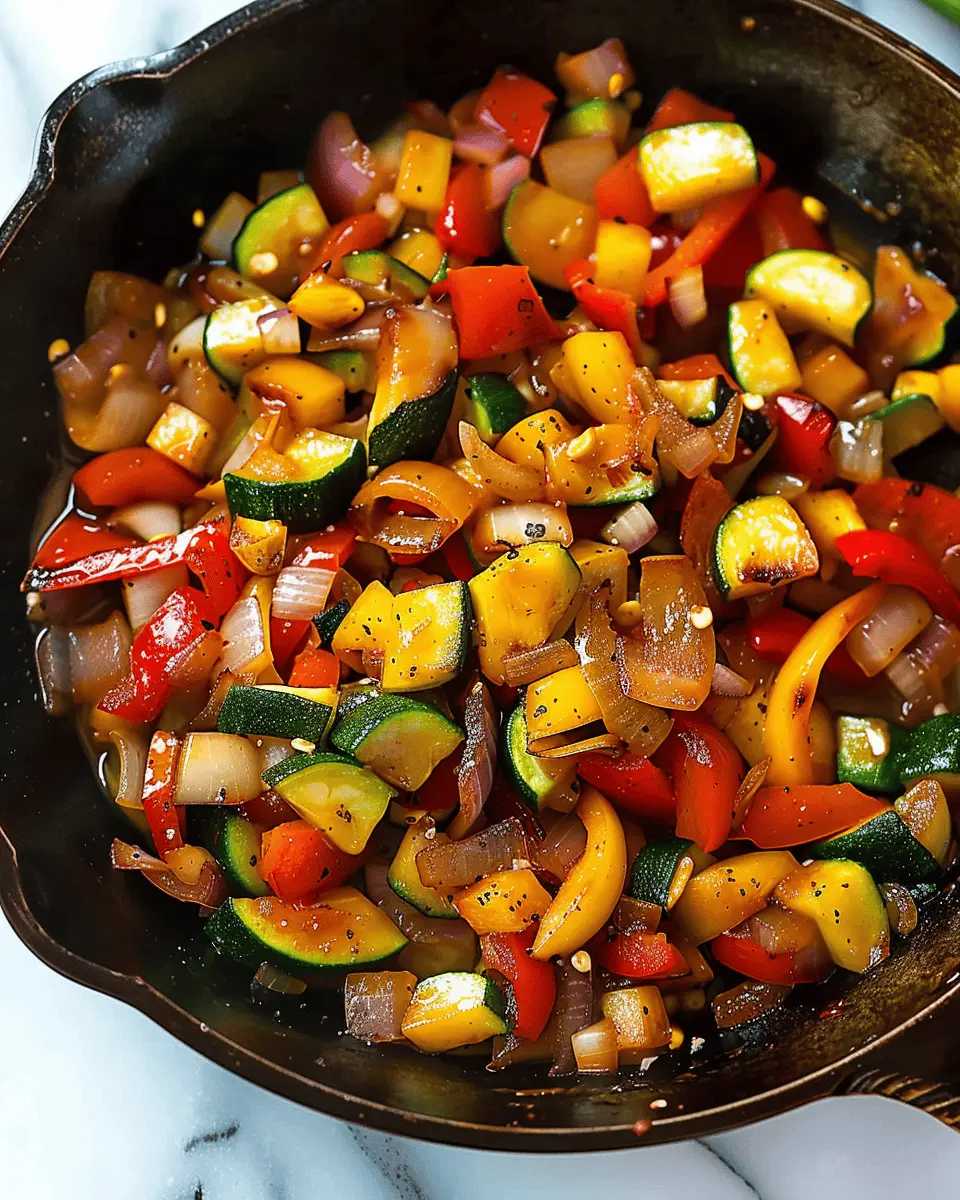
Serving Suggestions for Sautéed Vegetables
Pairing Sautéed Vegetables with Grains
Sautéed vegetables are incredibly versatile and pair wonderfully with a variety of grains. Think about tossing them with fluffy quinoa, hearty brown rice, or even orzo for a satisfying meal. Not only does this add substance, but it also boosts the nutritional profile of your dish. If you’re looking for something a bit more light and refreshing, try serving them over a bed of couscous.
- Try This: Mix sautéed veggies into your grain of choice, sprinkle some feta cheese on top, and drizzle with a citrus vinaigrette. Your taste buds will thank you!
Using Sautéed Vegetables as a Colorful Salad Topping
Another delightful way to enjoy sautéed vegetables is as a vibrant salad topping. Imagine the crunch of fresh greens, paired with the savory goodness of sautéed vegetables. Not only do they add flavor, but they also amp up the visual appeal of your salad!
- Serving Tip: Enhance your salad with roasted Turkey Bacon or Chicken Ham for an extra layer of taste.
For creative ideas, check out resources like Bon Appétit or Food Network for inspiration! You can easily transform a simple salad into a feast that pleases both the eyes and the palate.
Time Breakdown for Sautéed Vegetables
Preparation Time
Getting your ingredients ready for sautéed vegetables is a breeze! You’ll want about 10 minutes to wash, chop, and prepare your veggies. This is a great time to unleash your creativity—pick your favorites, mix and match, or even try some seasonal produce for an extra kick.
Cooking Time
Once you’re set, the cooking part only takes around 5 to 8 minutes. A hot pan makes all the difference! With a simple drizzle of olive oil and a sprinkle of seasoning, you’re just a few minutes away from flavorful, tender veggies.
Total Time
All in all, you’re looking at a total time commitment of about 15 to 18 minutes from prep to plate. Perfect for a quick weeknight dinner! This makes sautéed vegetables an excellent choice for busy young professionals like you who value both nutrition and speed. For more cooking tips and recipes, check out Culinary Institute of America or America’s Test Kitchen.
Nutritional facts for Sautéed Vegetables
Calories
Sautéed vegetables are a low-calorie option when you need a nutritious side dish. A serving can range from 50 to 100 calories, depending on the types of veggies and any added oils. By choosing lean oils like avocado or olive oil and limiting your portion size, you can easily keep the calorie count in check.
Vitamins and Minerals
Packed with essential vitamins and minerals, sautéed vegetables are a fantastic way to boost your intake of:
- Vitamin A: Important for eye health.
- Vitamin C: Supports your immune system.
- Potassium: Helps regulate blood pressure.
- Fiber: Aids digestion and increases satiety.
For an even deeper dive into the benefits of specific nutrients, check out resources like the Nutritional Guidelines.
Health Benefits of Sautéing
Wondering what makes sautéed vegetables a standout choice? Sautéing not only enhances the flavors but also helps retain essential nutrients. When you sauté veggies, they are cooked quickly at high heat with minimal oil, preserving water-soluble vitamins. This method also allows for a fuller taste unlike boiling, where nutrients can leach into the water.
Plus, sautéed veggies can help you consume a wider variety of vegetables, making it easier to meet the recommended daily intake. Have you ever thought about how colorful your plate is? The more colors, the more nutrients!
Incorporating vibrant and healthy sautéed vegetables into your meals doesn’t just support your health—it also adds delicious flavors and textures, making every bite enjoyable. Look into using this vegetable cooking guide to perfect your technique!
FAQs about Sautéed Vegetables
What’s the best way to store leftover sautéed vegetables?
Storing sautéed vegetables properly is key to maintaining their taste and texture. First, let them cool to room temperature before transferring them to an airtight container. They can usually be kept in the fridge for up to three days. To make reheating easier, consider separating them by type—this way, you can use specific veggies for different meals later on.
If you want to extend their shelf life, freezing is an option too! Just make sure to blanch them briefly before sautéing if you’re planning to freeze your veggies, which locks in nutrients and flavor. Check out this helpful guide on storing vegetables for more tips.
Can I sauté frozen vegetables?
Absolutely! Sautéed vegetables from frozen packs are a convenient choice. Just remember to thaw them first to avoid excess water in your dish. If you’re short on time, toss them directly into the pan, but keep the heat moderate—this helps in achieving that lovely caramelization while ensuring they’re cooked evenly. For best results, add them to your pan along with a bit of oil and spices.
How can I make my sautéed vegetables more flavorful?
Elevating the flavor profile of your sautéed vegetables is easier than you might think! Here are a few simple tips:
- Use garlic and onions: Sauté these aromatic favorites first before adding your veggies for an irresistible base.
- Incorporate herbs: Fresh herbs like basil or thyme can add a burst of freshness.
- Consider spices: Experiment with cumin or smoked paprika for that extra depth.
- Try acid: A splash of lemon juice or balsamic vinegar right before serving can brighten up the dish.
With these techniques, you can turn a simple vegetable dish into a vibrant and delicious meal that you’ll look forward to!
Conclusion on Sautéed Vegetables
Sautéed vegetables are not only quick and easy to prepare, but they also offer a delightful way to incorporate more nutrients into your diet. I encourage you to experiment with different vegetables, spices, and proteins as you explore the art of sautéing at home. Imagine creating a dish that’s uniquely yours, perhaps combining red bell peppers, zucchini, and some turkey bacon for a savory twist!
Consider visiting Cooking Light or Serious Eats for more inspiration and tips. Whether you’re serving a weeknight dinner or impressing guests, sautéed vegetables can transform any meal. Happy cooking!
PrintSautéed Vegetables: The Easy Step to Flavor-Packed Dishes
Learn how to make sautéed vegetables that are packed with flavor and can be used in a variety of dishes.
- Prep Time: 10 minutes
- Cook Time: 10 minutes
- Total Time: 20 minutes
- Yield: 4 servings 1x
- Category: Vegetables
- Method: Sautéing
- Cuisine: Various
- Diet: Vegetarian
Ingredients
- 2 cups mixed bell peppers
- 1 cup zucchini
- 1 cup carrots
- 2 tablespoons olive oil
- 1 teaspoon garlic, minced
- 1 teaspoon salt
- ½ teaspoon black pepper
Instructions
- Heat olive oil in a large skillet over medium heat.
- Add garlic and sauté for 1 minute.
- Add the mixed bell peppers, zucchini, and carrots.
- Sauté the vegetables for about 5-7 minutes until tender.
- Season with salt and black pepper.
- Serve warm and enjoy!
Notes
- For extra flavor, add herbs like basil or thyme.
- Try adding other vegetables such as broccoli or asparagus.
Nutrition
- Serving Size: 1 cup
- Calories: 120
- Sugar: 5g
- Sodium: 200mg
- Fat: 7g
- Saturated Fat: 1g
- Unsaturated Fat: 4g
- Trans Fat: 0g
- Carbohydrates: 15g
- Fiber: 4g
- Protein: 3g
- Cholesterol: 0mg
Keywords: sautéed vegetables

